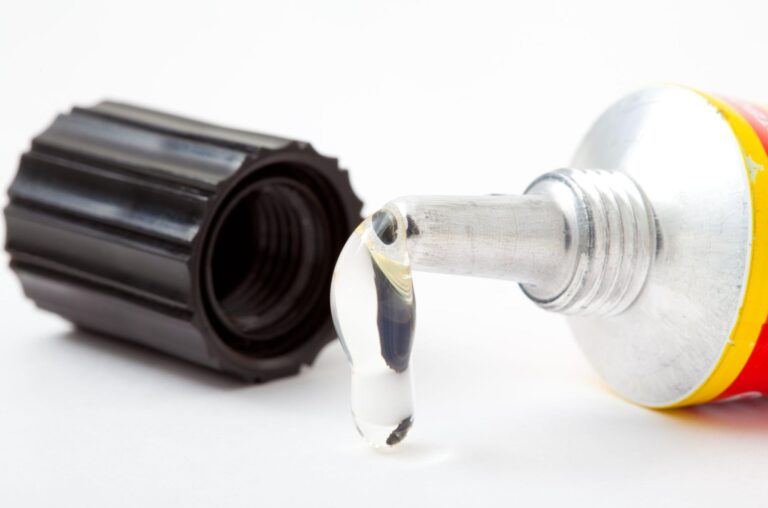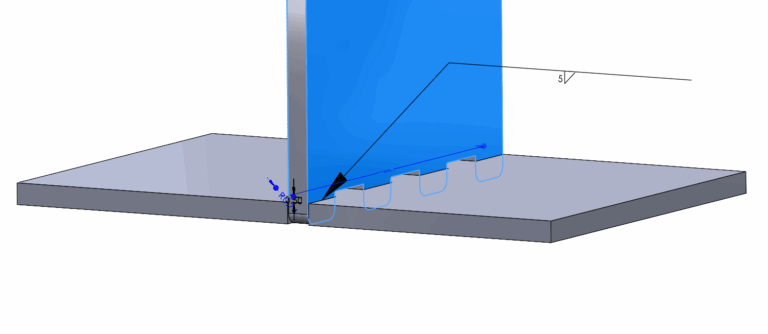Time to read: 9 min
So, you’ve been designing “things” using Solidworks for a while now. Maybe you took a Solidworks class or two, maybe you didn’t. Either way, you got to the point where you want to design more complicated & organic shapes and you are struggling. After all, designing organic shapes typically requires surface modeling in Solidworks, which they don’t teach in most classes and is notoriously difficult. Plus, people you know have told you that Solidworks is the wrong tool for surfacing.
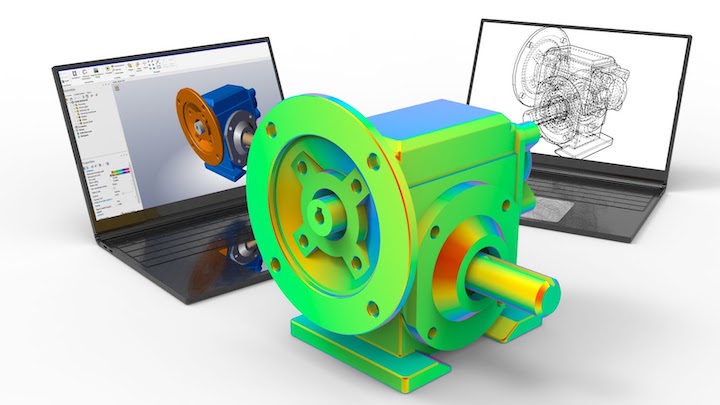
Well, your drafting class did you a disservice and those people who told you Solidworks isn’t good for surface modeling are wrong.
Here are some things you should know about Solidworks:
- Solidworks is an excellent 3D modeling program and is extremely versatile and user-friendly. Solidworks can also be customized with code to improve its efficiency.
- While Solidworks is not a program focused on surface modeling, it has a wide array of highly capable surfacing tools.
- Solidworks is used to design amazing organically shaped products by individuals at home and at large corporations. It can be done. It is done all the time.
- There are limitations to the program, like with any software, but the key is understanding these limitations and knowing how to work around them.
- Practicing surface modeling makes perfect, or at least proficient, so practice!
Why Use Solidworks Surface Modeling?
If you intend to surface model a lot, you may wonder why not turn to a different CAD program that is specialized for surface modeling.
Think about it this way, if you went to cook dinner in your kitchen and could only use ONE knife, which would you choose? Would you choose a small and nimble paring knife or a big butcher’s knife? Probably neither. After all, you can only have one knife, so you want an all around tool, not something specialized. That means choosing something like a medium-sized chef’s knife that works well for most things.
Sure, the chef’s knife isn’t ideal for small, intricate cuts, nor is it perfectly suited for breaking down a big chunk of meat. But, that chef’s knife is a workhorse that can get the job done in either case, even if there are specialty tools better suited to the task. And after working with a versatile chef’s knife for some time, you learn how to maximize its strengths and minimize its weaknesses so it does everything you need it to.
While you can learn multiple CAD software programs and switch back and forth between them seamlessly, many designers stick with one particular software for years at a time — most companies and certainly most individuals don’t have the budget for multiple software licenses, after all. Also, most CAD software has similar capabilities, but the controls and features live in different menus which can be frustrating to learn.
So, if you’re going to have only one 3D modeling program, Solidworks is a great choice. With proper instruction and enough practice, it can be your do-it-all secret weapon for surface modeling, just like that chef’s knife is for your culinary exploits.
Tips & Tricks for Solidworks Surface Modeling
One of Solidworks’ well-known benefits is the ability to 3D model parametrically. Parametric modeling allows users to create 3D models that are driven by parameters (dimensions, features, or other design parameters). This means that you can change the dimensions and/or shapes of existing features and sketches, click a button, and Solidworks magically updates the entire model. For most products and situations, it’s an incredible and useful ability.
However, just because you can 3D model things parametrically doesn’t mean that you should. There are plenty of shapes you’ll design that take so many features to create, you run the risk of one feature creating an error that ruins the entire model. Plus, all of those features increase your file size and require a lot of processing power each time the software regenerates the model. That’s why, sometimes, direct modeling is a superior approach.
Surface modeling from a parametric model in Solidworks inherently has some problems:
- Interdependency between surface geometries and parametric model constraints and relationships: When creating surfaces from a parametric model, the surfaces may inherit these parametric relationships, which can lead to unintended changes in the surface geometry when the underlying parametric model is modified. Therefore, creating and modeling surface geometry independent of the parametric model constraints is difficult because parallel relations between features can impact how surfaces behave, and cause non-desirable effects.
- Feature tree history for the parametric features: The feature history can result in complex surface geometry which makes it difficult to edit or manipulate surfaces independently.
- Difficulty in maintaining design intent: Solidworks parametric modeling is great for capturing and maintaining the integrity of design intent with the use of parametric relationships. When you create a surface from a parametric model, you may not be able to correctly preserve the original design intent, which can make it difficult to update the model in the future.
- Surface modeling from a parametric model is slow: Parametric models in Solidworks require frequent rebuilding, which can cause lags. When you add the complex calculations and dependencies from surface modeling, you can expect to see slow regeneration times, which decreases your productivity.
If you must use parametric modeling in Solidworks, you’ll need to perform some additional work on your solid model before starting surface modeling. Here’s how you can prepare a parametric file for surface modeling:
- Rebuild the same model in a way that uses fewer, or more reliable steps
- Export the final geometry, then import it back into your model in a way that preserves the shape, but removes the entire history of how you created it.
Pro-Tip: If you want to know how to effectively deal with Solidworks import errors, check out our Best Practices for Fixing Solidworks Import Errors
For surface modeling of organic shapes, I prefer the second option because reducing the risk of a part blowing up outweighs the benefits of the file being parametric. This is especially true because parametric modeling is only helpful if the changes you want to make are possible with your design strategy. If you try to make changes that you didn’t plan for, you’ll likely have to rebuild some or all of your document anyway — so, you might as well prepare your model for surface modeling correctly.
As a result, I often 3D model certain portions of a given design so that I can use as many features as I need to, without worrying about how messy my feature tree becomes. Once I get the result I’m hoping for, I do an error check on that surface or solid. If it passes inspection, I save the body as a Parasolid (*.X_T).

Then, I use the import command (Insert -> Feature -> Imported) to import it back into the feature tree. I error check the imported geometry and if it passes inspection, only then do I delete all of the features that created it (feature history).
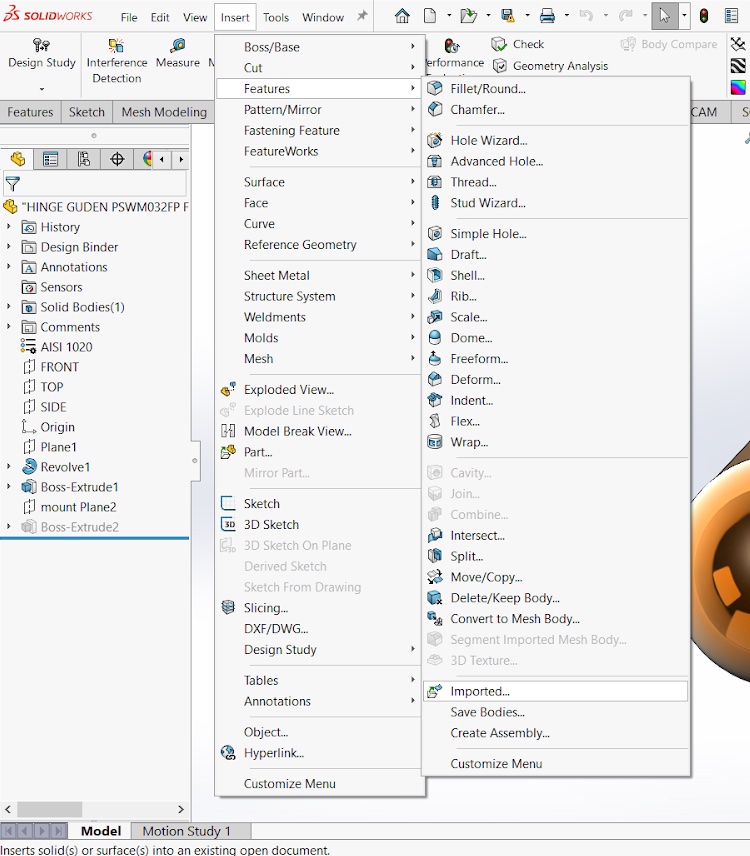
I recommend this technique only for aspects of your product, not the whole thing. Let’s say you want to cut the top off of your part using a complex surface. You can model the entire part parametrically and use a dummy surface as a cutting tool. In that case, everything would be parametric except for the one item most likely to cause problems if it were parametric. Remember, you can always replace the dummy surface you used as a cutter with a new one.
Here are a few more tips for success:
- Export to parasolid (*.X_T) instead of IGES, STEP, etc because parasolids import back into Solidworks with the fewest errors
- Select one or more bodies that you want to export and then click File -> Save As. After you select the file name, it will ask you if you want to save “All Bodies” or “Selected Body(ies)”. Choose “Selected Body(ies)” so you don’t have to export and then import unnecessary geometry.
3D Modeling Drafted Surfaces
Many people struggle to properly add draft when surface modeling organically shaped injection molded parts. Draft is critical for molded part designs because it facilitates part removal from the mold once the part is molded.
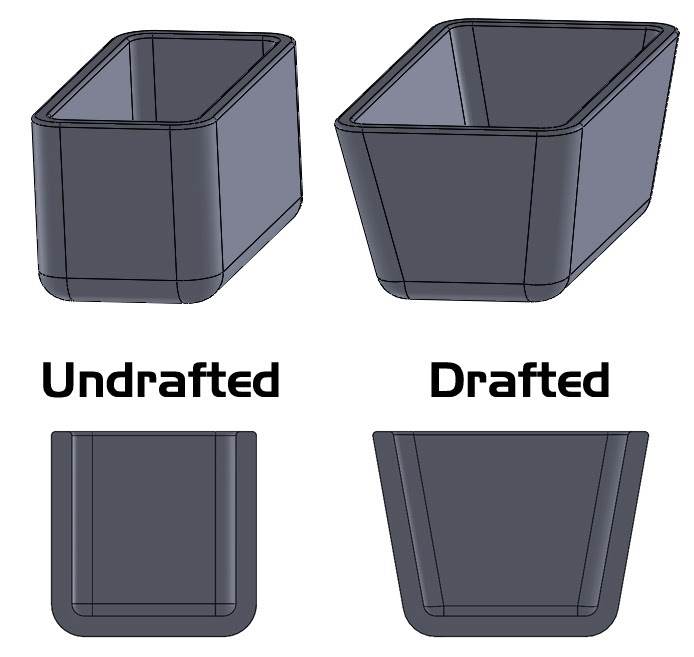
If you ever want to check a part’s draft, use the Draft Analysis tool (View -> Display -> Draft Analysis).
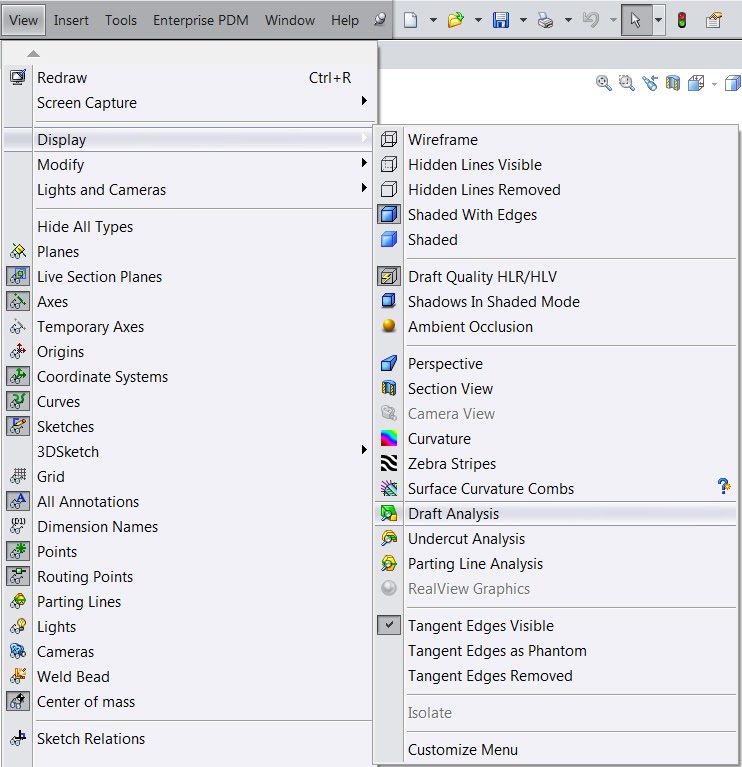
The Draft Analysis tool will color code your part as red, yellow, and green based on a draft plane that you select and a draft angle you choose. Your goal should be to see only red and green, no yellow (yellow indicates where draft is needed).
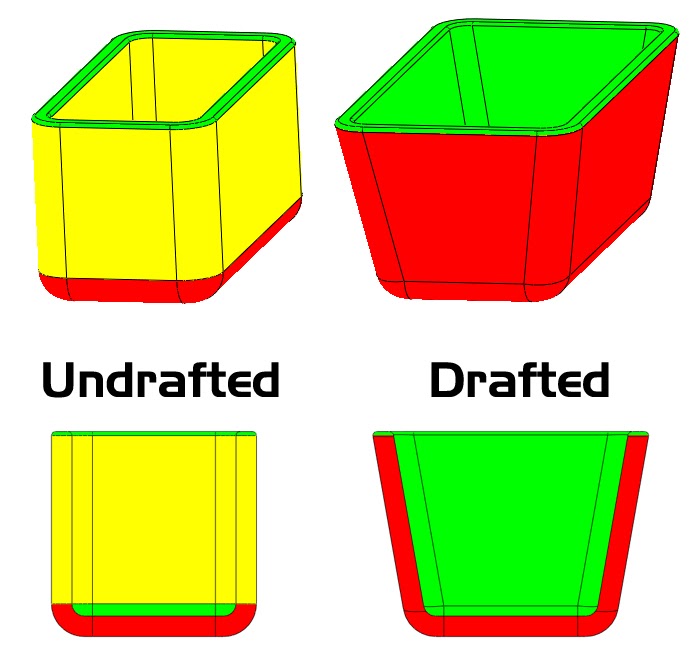
Here are 3 great ways to add draft your part:
- Using the Draft Command (Insert -> Feature -> Draft)
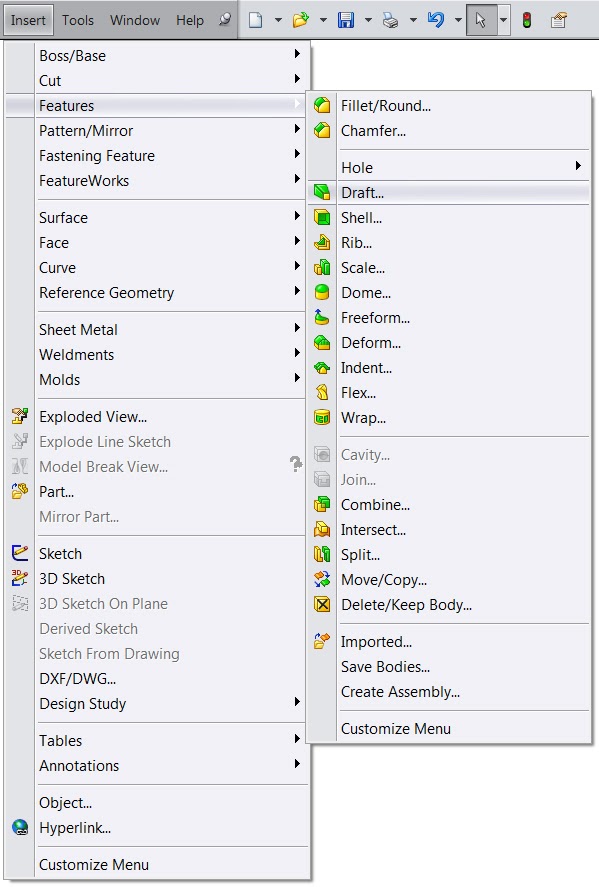
The Draft command is the most commonly used tool to add draft to existing geometry. This is the one most often taught in training classes, and the tool that you would expect to use. What you might not know about the Draft feature is that it works on surfaces as well.
The most useful setting for this feature is choosing “Parting Line” as your type of draft instead of “Neutral Plane”. This allows you to choose an edge that will remain constrained to its current position while the adjoining face is drafted. That edge does not need to be flat, so this feature is incredibly helpful when designing organically shaped parts.
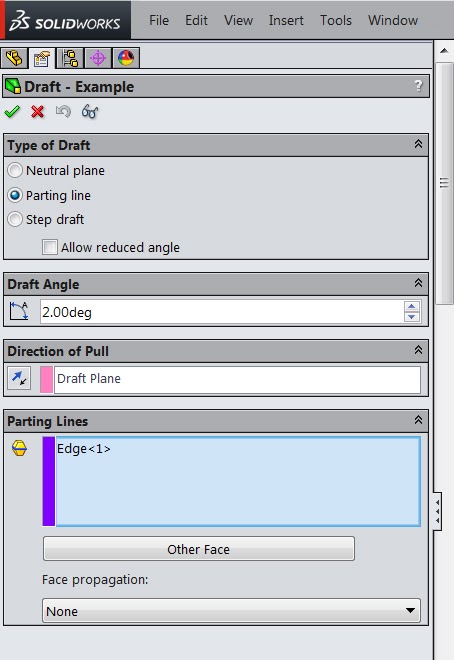
Pro-Tip: For tips on designing your draft angle for injection molded parts, check out our Our Best Tips for Designing Your Injection Mold
- Use the Ruled Surface Command (Insert -> Surface -> Ruled Surface)
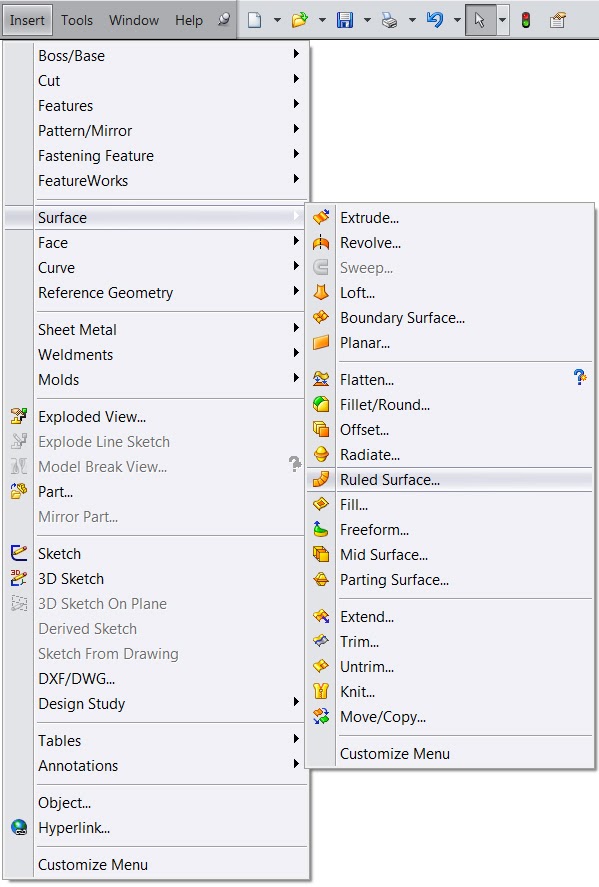
The Ruled Surface command is a great feature for creating drafted surfaces mostly from scratch. This feature will create a surface (not a solid), so it’s a surface modeling feature. To use “Ruled Surface” to create a drafted surface, choose the “Tapered to Vector” option and choose your draft plane as the vector. Then, choose an edge to begin your new surface. Lastly, you choose which direction you want the surface to go, by how much, whether you want the surface drafted IN or OUT, and at what angle.
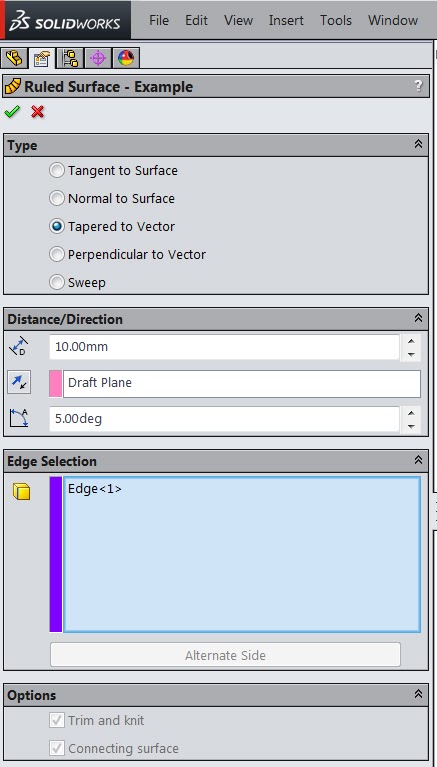
- Use the Split Line Command (Insert -> Curve -> Split Line)
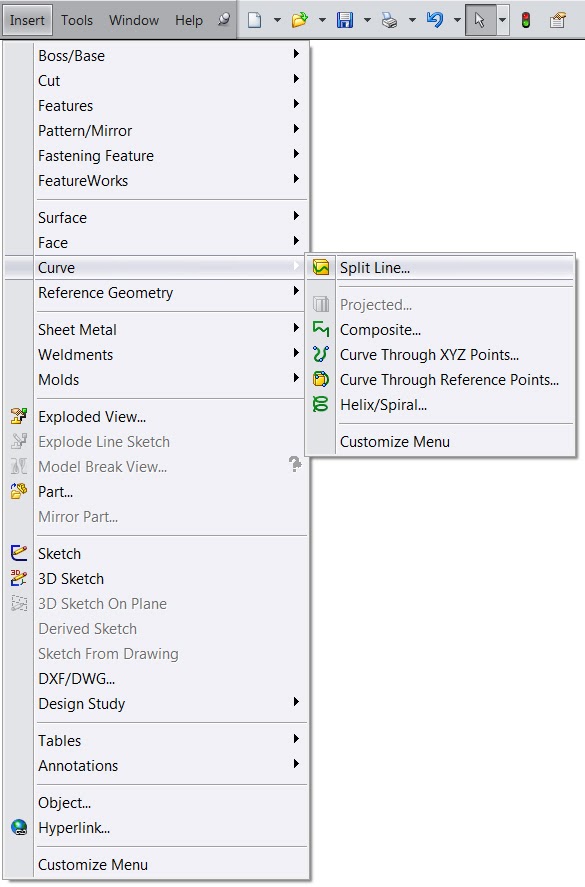
Many engineers don’t know that Split Line can be a useful tool when drafting a part. If you select “Silhouette” as the type of split, you can choose a draft angle at the bottom. When you click ok, it will analyze the surface you selected and split it into two separate faces. One face will be in draft to the angle specified (or more) and the other will not. You can then use Ruled Surface or Draft to draft the undrafted face.
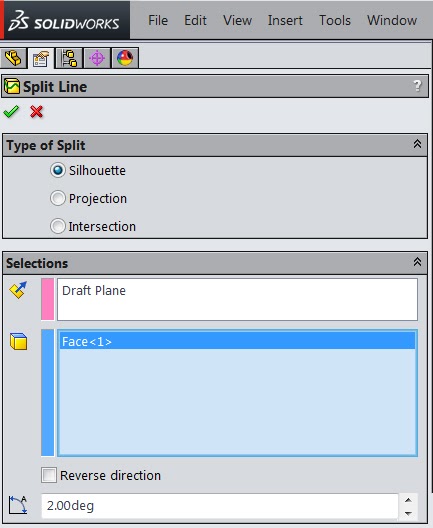
Solidworks: A Solid Option for Surface Modeling
Solidworks is certainly not perfect. In fact, no 3D modeling software is. While Solidworks is not a surface modeling-specific program, it’s still adept at surfacing and can create virtually any product you can conceive — and th limitations of the program are worth the other benefits the software provides. Besides, with training and practice, you’ll find plenty of ways to work through any obstacle you come across.
So, get out there and get surfacing with Solidworks!
Additional Resources:
- If you want to learn more, the Solidworks Advanced Part Modeling class and the Solidworks Surface Modeling class each provide excellent instruction in the more advanced skills required for successful surface modeling. I suggest you take both of those classes OR check out the books from those classes (if you can find them, because the official books are not for retail sale).
- 2. For tips on customizing your toolbar in Solidworks, check out our Solidworks Tips and Tricks: Customized Toolbar and Splines
- 3. Solidworks is full of free surface modeling tutorials, so you can improve by going through them all, then playing around with the settings and dimensions at each step to see how the result changes. The tutorials can be found by clicking on Help -> SOLIDWORKS Tutorials
4. Fictiv has also created a tutorial on How to Setup Files for Multimaterial 3D Printing
Fictiv – Complex Parts at Ridiculous Speeds!
No matter how complex your design, Fictiv can manufacture it, whether its CNC machining, injection molding, 3D printing, or urethane casting. We’re your operating system for custom manufacturing that makes part procurement faster, easier, and more efficient. In other words, Fictiv lets engineers, like you, engineer — instead of sourcing, vetting, onboarding, and managing suppliers.
With Fictiv, thousands of companies have streamlined their custom part sourcing workflows, unlocking capacity for product innovation and transforming how the next generation of products are designed, developed, and delivered.
Create an account and upload your part to see what our instant quote process, design for manufacturability feedback, and intelligent platform can do for you. We make complex parts at ridiculous speeds!









